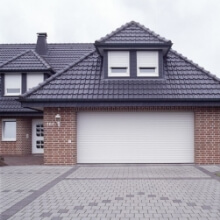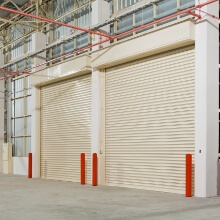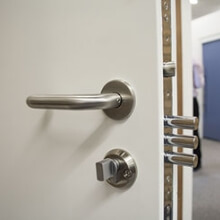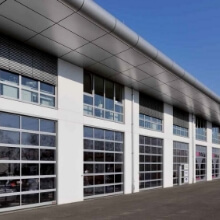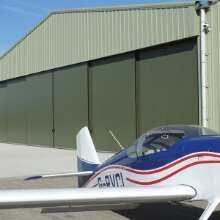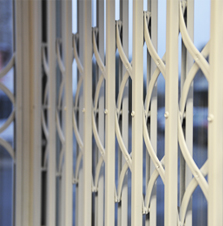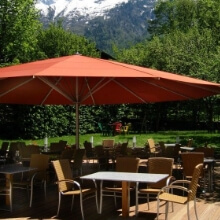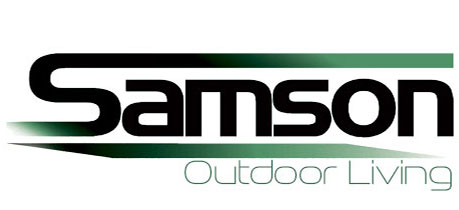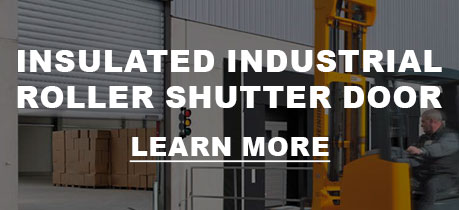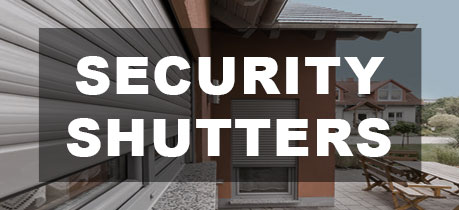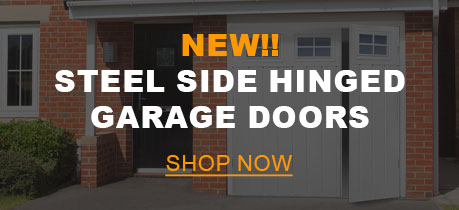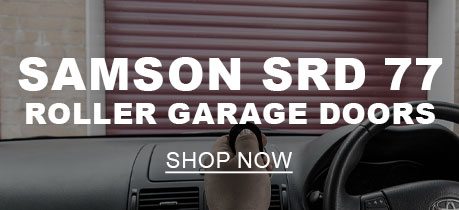The answer to your selected question is shown below.
Please use the Search tool or the menus on the right to find and select more questions and answers.
If you think our response isnt clear, it would be very helpful if you could
contact us
with the issue so that we can improve this section of our web-site.
Clever Electric Roller Shutter Doors?
Clever Doors for Safety, Convenience, Energy Conservation and Security
When you replace or specify a new industrial roller shutter door there are many questions that need responding to before a specification can be provided. Incorrectly specified roller doors could be disastrous and costly when they are not used for the purpose they were designed for. Many obvious little things can also give a massive help on a day to day operation.
The Samson SeceuroDoor and SeceuroShield roller doors can offer very clever and obvious solutions to issues that have been around for many years with roller doors.
We can offer a basic roller shutter door when asked, but what do you mean by a ‘basic’ roller door? Usually we find this means a manually operated door, which is fine, except nowadays unless the door is to be only opened once a day or less, or there really is no electricity, the price for an electric drive motor is hardly any more than a manual door which requires mechanisms in order to make it manual in the first place. It is worth bearing in mind how long it actually takes to fully open an average size industrial chain operated roller door too, especially in the winter months! We do offer some spring balanced industrial doors which open without the need for a chain but they are only available as a double skinned insulated curtain specification, so by definition are already not a basic door.
A lot of people asking for a basic roller door will also be referring to a galvanised steel, unpainted curtain and a very simple electric single phase motor drive, with a ‘hold to run’ pushbutton control for internal control only. You would also expect a chain operated emergency manual override in the event of a power failure, and this would be as basic as any electric roller shutter door can be. Again, this specification is fine if the door is to be opened by a limited number of people, preferably only the one, and it is not opened very often, as using the most basic motor drive also means the rating is for a few operations only per day.
What else needs discussing?
The specification of any roller door to be used commercially or in a tough industrial environment has to be decided by several key factors and below are just a few of the more obvious ones to us.
Size is the first issue - Width and Height?
Is the door going in-between or face fitting to the aperture? The side guides, endplate design and electric motor type all depend on this fact. For example an end fitted motor drive is not possible when the door is installed in-between the opening.
Approximate number of operations per day?
The specification of the electric motor is determined by the intended number of cycles the for will be asked t go through during an average day. Get this wrong and the door motor could be useless after 6 months and need replacing.
Single or Three phase availability?
Sometimes there is no three phase electric available so simple phase is only possible, three phase is normally used for large, heavy door with frequent operations and single phase less so but there are new generation motors in single phase specifications capable of heavy workloads.
What is the environment inside the building - i.e. very dusty, very humid, etc…
If the inside of a building is very humid there may be issues with the electric motor drive corroding quickly and a different specification could sort this. The same goes for dust.
Is thermal insulation required for the building?
A big topic these days but an obvious one where a building does need to be kept at a certain temperature all year round. The savings from preventing heat loss should be obvious.
Would a faster opening speed benefit the activity of the building?
Nearly every single person would like the fastest possible opening and closing speed for any industrial door but it can come at a price depending on the size weight and slat type. Obviously the faster doors do benefit a building.
Who will be operating the door on a daily basis?
Is there one dedicated person or several people needing to know how to control the door? If it is a general operation then the safety devices have to be full proof.
Is the door close to general public access?
If an electric operated door is near to public access then extra precaution is required to ensure the door cannot operate if an obstruction is detected in the path of the door and some companies might want to extend this 'path' to ensure complete safety.
Would partial opening be beneficial most of the time?
A door that can be partially opened for the access of pedestrians or smaller vehicles means less energy taken up and less exposure for the building internal area, better for security and any heating bills.
Does the door need vision panels to see outside when closed?
Many companies like to have the ability to see who or what is outside the door when a delivery arrives and all roller doors can have perforations or slots in the slats but some can have glazed inserts too to keep security and insulation levels in place.
Would a timed opening and closing be beneficial?
Some roller doors do open in the morning and do not close until later in the day so timed operation could benefit.
Should the door only be operated by one person and a code or key system?
In terms of security and safety some doors should only be operated by a designated person and coded and key access control is common place with further enhancements possible.
Does the door need to be more secure than normal?
Many accessories as well as a security rated roller door can make the door more secure
Is the door near to the coast with salt in the air creating more corrosion?
Special primers can be used when exposure to salt is a possibility as well as other corrosive liquids and gasses.
Is the door in an exposed position to high winds?
High winds can be a nightmare for roller doors and with more frequent stronger winds these days this is an important one to get right. Windlock guides and high wind ratings for the curtain can make all the difference in the long term.
Once a better understanding of the requirements are known only then can a truly correct specification be suggested and in a lot of cases of course the overall costs may seem high but the costs for specifying a large industrial roller door incorrectly can be a lot higher in the long term.
So what ‘special’ features can be offered?
Thermal and Acoustic Insulation
One of the first things to consider in a roller door is upgrading to an insulated curtain. Not necessarily for the thermal insulation which obviously will be relevant to many people, but also for the strength in the curtain providing better security and stability in high winds. An insulated roller door curtain will also not rattle like a single skin steel curtain usually des when it is windy. The whole operation and fell for an insulated curtain is better and we can offer various doors in aluminium or steel double skinned slats. The acoustic insulation will also be relevant to many factories with noisy operations inside.
High Speed Operation
How many roller shutter doors, especially when they are high, take so long to open? You will will find it is most industrial doors, especially over a few years old, on older motor technology. It is relatively easy, and only a small price increase, to upgrade many of the roller door models we offer to a high speed, adjustable speed, motor drive. In reality this is the difference between a 5 metre high roller door opening in about 25 seconds average speed or with a high speed motor drive set at 75% increase opening in about 5 seconds. This will save a lot of precious time during a day and keep the heat in more if you have opted for an insulated door. Traditionally many buildings use a combination of a fabric fast action speed door fitted behind a steel traditional roller door which acts as the security when the building is closed. This is not necessary any more with the range of steel and aluminium high speed insulated roller doors as this offers the speed and durability, the security, and also the insulation - 3 doors in one!!
Simple Safety Features
Even our most basic control panels will offer some smart options. Most low daily use roller doors will be controlled by a ‘hold to run’ internal pushbutton operated by a human being. They have to hold their finger on the button throughout the complete opening and closing cycle whilst being in total view of the shutter. The next stage up form this is to be able to open the shutter on impulse of the button but then still having to hold the down button for closing. This is basic operating and considered safe. One simple feature is to have the roller door set in a mode where the door will open to the full height on impulse and cannot possibly ever be in any other position apart from fully open or completely closed. The control panel will not allow the operative to half close the door or even close the door a little, the door always opens fully to avoid potential damage from any vehicle entering and the door not being fully opened and damage occurring.
Advanced Safety Features
In order for a roller door to be opened automatically by control features such as radar detection, induction loops, timers, or remote control handsets it is essential the door has a closing edge detection system as a minimum safety feature, so if the door hits any obstacle, at any point during the auto closing cycle, it will stop and reverse immediately. If the door is able to be approached by the general public in any way additional safety features such as infra red beams are strongly advised to prevent the door from operating at all if obstructed. This is particularly important with high speed doors, many of which use infra red light beam curtains, effectively a wall of beams up to about 2.5m high.
Particularly useful safety and access control systems now available are the new generation of radar and laser detection systems (LZR-i110 and LZR-i100) where small or large areas inside and outside the industrial door can be specified as ‘no go zones’ and the door will not operate if anyone or anything is in this area.
This same system of course is used to open the door in the first place so performs the function of an induction loop but without the need for cutting into the floor and possible future issues with the loop cabling. We also offer the Falcon, Condor and Milan ‘presence sensor systems’ using microwave detection as well as an infra red sensor providing an accurate detection and filtering system making an effective decision on whether there is a person or vehicle present to avoid unnecessary opening of the door.




